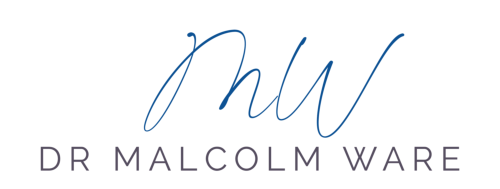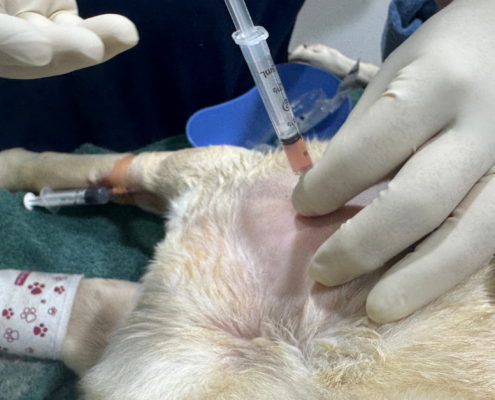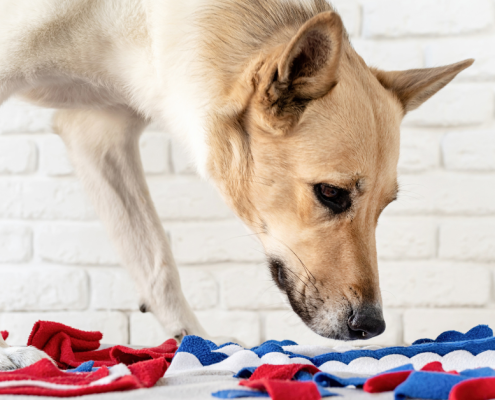Why Post-Cruciate Surgery Rehab is Just as Important as the Surgery
When your dog tears their cruciate ligament, surgery often feels like the biggest hurdle. It’s a major procedure, and it’s completely natural to breathe a sigh of relief once it’s over. But here’s the thing: surgery alone doesn’t complete the healing process.
Without a structured recovery plan, many dogs don’t regain their full mobility – even after a successful operation.
At The Dog Mobility Clinic, we see this more often than we’d like. Pet parents are surprised when their dog still limps, seems stiff, or just isn’t bouncing back the way they hoped. The truth is, post-operative rehabilitation is just as important as the surgery itself. Think of surgery as fixing the damage, and rehab as teaching the body how to use that repaired part again.
Surgery repairs the structure. Rehab helps your dog truly recover.
A Story We See Too Often
Picture this: a dog comes home after cruciate surgery. The surgery went well, and everyone’s hopeful. But weeks later, the dog is still limping, avoiding play, and struggling to build strength in that leg. The family wonders: “Didn’t the surgery work?” It did. But without the second half of the recovery process – rehab – their dog didn’t have the chance to fully heal.
What Surgery Does (and Doesn’t Do)
Surgery is crucial. It stabilises the knee joint and stops further damage. But it doesn’t:
- Rebuild lost muscle
- Improve joint flexibility
- Correct changes in the way your dog walks
- Help restore balance and coordination
That’s where a thoughtful rehab plan comes in. Rehab supports the whole dog, not just the repaired joint.
What Happens If Rehab Is Skipped?
When dogs miss out on proper rehab, we often see:
- Muscle loss: Muscles shrink quickly after injury. Without rehab, they may not bounce back.
- Stiff joints: Dogs can develop long-term changes in the way they walk if the joints aren’t gently mobilised early on.
- Increased arthritis risk: When dogs compensate with other limbs, it puts extra stress on joints and speeds up joint disease.
- Slower overall recovery: Studies show that dogs who go through structured rehab recover faster and more completely.
What Good Rehab Looks Like
Rehab is a gradual process that supports healing, strength, and confidence. Here’s what it typically looks like:
- Weeks 1–2: Managing pain, gentle range-of-motion work, icing, short controlled leash walks.
- Weeks 3–6: Starting to rebuild strength, work on balance, possibly using an underwater treadmill.
- Weeks 7–12+: More advanced exercises, conditioning, and returning to favourite activities.
We might also incorporate therapies like laser, massage, acupuncture, or home exercises you can do together – all tailored to where your dog is in their recovery.
Why Rehab Isn’t Always Talked About
Sometimes the focus stays on the surgery itself, and rehab gets overlooked. But more and more veterinary professionals now agree: rehab should be seen as part of the treatment, not an optional extra.
Many families feel frustrated when their dog doesn’t bounce back as expected. It’s rarely the fault of the surgery – it’s just that recovery was left unfinished.
How We Can Help: Our Post-Cruciate Recovery Program
At The Dog Mobility Clinic, we believe every dog deserves the chance to get back to doing what they love. That’s why we offer a 12-week recovery program led by experienced rehab professionals. You can join us in person or access our support from home:
- On-site sessions (Seymour): Hands-on therapy, tailored exercises, and advanced tools like hydrotherapy and laser.
- Online rehab program: Perfect if you’re not local. We send weekly video lessons, guides, and offer one-on-one support via email or Zoom so you feel confident at every stage.
Our program is designed to:
- Restore healthy movement in the surgical leg
- Prevent injury in the opposite leg
- Ease pain and stiffness
- Rebuild strength and stamina
- Help your dog return to the things they love most
One Final Thought
You made a big investment in your dog’s surgery – don’t stop halfway. Rehab turns that investment into long-term health and happiness.
Whether you visit us in Seymour or follow along from your living room, we’re here to support you and your dog every step of the way.
Want to give your dog the best shot at a full recovery? Contact us or ask us about joining our 12-week post-cruciate rehab program.






